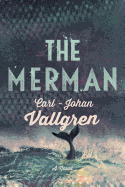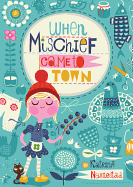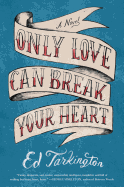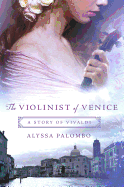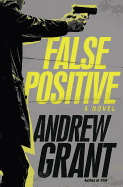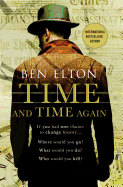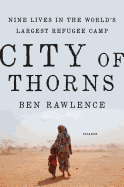Friday, January 8, 2016
In Shelf Awareness Pro, we run a twice-weekly feature called Book Brahmin, in which we pose a series of questions to authors and others in the book business; we receive some predictable answers ("Book You've Faked Reading: Ulysses") and often, some highly unpredictable ones. A sampling, with links to the full Brahmins:
 Marlon James, whose most recent novel, A Brief History of Seven Killings (Riverhead), won the 2015 Man Booker Prize. He teaches at Macalester College in St. Paul, Minn., where Gov. Mark Dayton declared Marlon James Day in October.
Marlon James, whose most recent novel, A Brief History of Seven Killings (Riverhead), won the 2015 Man Booker Prize. He teaches at Macalester College in St. Paul, Minn., where Gov. Mark Dayton declared Marlon James Day in October.
Favorite book when you were a child:
Little House in the Big Woods by Laura Ingalls Wilder. I remember it being the first book with more words than pictures that I stuck with anyway. I really thought it was an anti-picture conspiracy, these books with only words. My five-year-old self just couldn't figure out why anybody would want a book without pictures. Ridiculous. But I stuck with it, despite that atrocious flaw, and realized at the end that I kinda liked it. After that, I couldn't stop reading. A few years ago I was on a panel with an Iranian and a Vietnamese writer, and when asked this question, we all said Little House in the Big Woods. There might have been many reasons, but the main one was really that Wilder was such a world-famous author that her books were just the most likely to be in a library.
 Mary-Louise Parker is a Tony, Emmy and Golden Globe Award-winning actress. Dear Mr. You (Scribner) is her first book.
Mary-Louise Parker is a Tony, Emmy and Golden Globe Award-winning actress. Dear Mr. You (Scribner) is her first book.
Book you're an evangelist for:
I'm quite thrilled when I introduce someone to poetry who was disinterested in it altogether, or thought it was something they had to suffer through. I read Wallace Stevens aloud to someone recently after they told me they didn't understand the point of poetry. I read just one poem, and this person was completely converted, was hearing music for the first time. I felt like I'd caught a 20-pound trout with my hands and gutted and roasted it, or that I saved a baby snow leopard from a poacher.
The Merman
by Carl-Johan Vallgren, transl. by Ruth Urbom
Carl-Johan Vallgren's The Merman, translated from the Swedish by Ruth Urbom, concerns the realistic and heartbreaking circumstances of teenaged Nella and her little brother, Robert; at the same time, it is a dark fairy tale about a mythical creature from the deep and the possibility of resisting evil.
Nella and Robert's parents are terribly incompetent, uncaring people. Robert struggles with learning disabilities and is bullied at school; protecting him, getting him the glasses he needs, and caring for his general well-being falls to his sister. Nella is hard-pressed to handle the responsibilities of the household, including cleaning up after her alcoholic mother.
When the neighborhood bullies begin to threaten Robert with violence, Nella turns to her only ally at school, a boy named Tommy. But contact with Tommy's brothers presents a new difficulty. They have pulled a mystical being from the ocean, whose otherworldly nature and wordless communication will change everything Nella understands about her life.
Nella is a compelling protagonist, reminiscent of Roald Dahl's Matilda in her miserable circumstances, but with a harder, more adult edge. Robert's suffering is almost unbearable, but sadly realistic. In Ruth Urbom's translation of Vallgren's tale, dialogue can be a bit stiff and formal, especially in the children's cases, but overall she establishes a tone appropriate to the balance of reality and mysticism in Nella's story and the stark ugliness of her life. Vallgren evokes his fantasy element with wonder and detail; The Merman is a singular story. Fans of adult fairy tales and bleak realism will be haunted and enthralled by this novel of human tragedies and the mystery of what lies beyond. --Julia Jenkins, librarian and blogger at pagesofjulia
Discover: In this grown-up fairy tale, a young women's battles with poverty, violence and neglect are further complicated when a mystical creature enters her life.
Only Love Can Break Your Heart
by Ed Tarkington
Ed Tarkington kicks off his first novel, Only Love Can Break Your Heart, with a ghost, a gun and an abandoned, white-pillared Southern mansion called Twin Oaks. He wraps it up with a grisly double murder in the same place. In between, his story touches on nearly every benchmark of good Southern Gothic literature: violence, sex, money, sibling rivalry, antipsychotic drugs, incest, abortion, religious fanaticism and plenty of alcohol. Set in the '70s and '80s, the narrative rides along on a soundtrack of the era: "Steely Dan, Zeppelin, the Who, Dylan, Rod Stewart... beneath the holy trinity of John Lennon, Mick Jagger, and Neil Young." There is even an uninhibited teen daughter of hippie parents named Cinnamon (after Young's "Cinnamon Girl") who "appeared to subsist on cigarettes, MoonPies, and Doritos... [and] eschewed bras... testing the limits of a dozen different perfectly aged concert T-shirts."
Tarkington clearly gets the ambience of the epoch as it filters life in his fictional northern Virginia small town of Spencerville. More importantly, he tells his story with the confident ease of Dickens in Great Expectations. Narrated by Richard "Rocky" Askew, Only Love Can Break Your Heart is the story of his early adoration of his older, chain-smoking, juvenile delinquent half-brother, Paul; his ambivalence toward his strict, gentry-aspiring father he calls the "Old Man"; and his touchy relationship with his mousy, Bible-reading mother, Alice. Navigating the roller-coaster fortunes of the Askew family and Spencerville, Rocky is the voice of candor and insight that holds Tarkington's ambitious tale together--both the Pip and Neil Young (as it were) of his generation. --Bruce Jacobs, founding partner, Watermark Books & Cafe, Wichita, Kan.
Discover: This first novel is an accomplished, confident coming-of-age story in the Southern Gothic tradition.
The Violinist of Venice: A Story of Vivaldi
by Alyssa Palombo
Alyssa Palombo's training as a classical musician is evident in her first novel, The Violinist of Venice, a historical romance set in the 18th century. Adriana, the musically talented daughter of a strict merchant father, has been forbidden to pursue her creative endeavors. Determined, however, to pursue her dreams despite her father's temper, Adriana secretly receives tutoring in playing the violin from a young priest and musician, Antonio Vivaldi, a situation that quickly escalates into a romantic, heated love affair. What unfolds amid the canals, grand homes and days of Carnival in Venice is a complex plot of lust and love, of duty and dedication, and of the misfortunes that befall those who test Fate.
Palombo's depictions of Vivaldi's music will make readers want to find each piece and listen, as in this description of Summer from the "Four Seasons": "The movement was punctuated here and there by bursts of rapid violin passages, perhaps an indication of an oncoming storm.... With no warning, all the instruments began to play at a frantic pace, with the violins moving to create waves of sound like rolling thunder. Vivaldi's harried, agitated solo evoked both lightning flashing jaggedly across the sky, as well as some poor creature trying to flee the storm. The lower string instruments combined to imitate the ominous rumblings of thunder, with the violins rushing on almost without pause."
Palombo skillfully blends historical facts with innovative and colorful fiction, creating a delightful, fast-paced romance that is sure to please music lovers and romance readers alike. --Lee E. Cart, freelance writer and book reviewer
Discover: The secret trysts between a merchant daughter and Antonio Vivaldi change their lives in ways neither of them could have expected.
Mystery & Thriller
False Positive
by Andrew Grant
Born in Birmingham, England, Andrew Grant (Run, More Harm Than Good) sets his latest thriller in Birmingham, Ala., a mini-urban sprawl as full of psychopaths, police politics, drugs and prostitutes as any big metropolis. Cooper Devereaux, a loner cop with a history of violence, shadowy criminal ties and disciplinary suspensions, catches a fresh missing-child case with the clock running. He is teamed with former undercover vice detective Jan Loflin, who has her own sketchy past, full of nervous energy, "as if there was too much for her small body to contain, leaving her muscles to burn off the excess like the flares at an oil refinery." Together they interview the parents of missing seven-year-old Ethan Crane, their neighbors and the boy's teachers and friends. Leads are scarce, the press and police brass clamor for progress, and soon the FBI joins the hunt. Both outsiders and cautious with each other, Devereaux and Loflin doggedly chase down a discarded toy here and an eyewitness sighting there while doing their own sleuthing on the side.
While the action zips along in short chapters, which open with the ominously increasing hours since Ethan's disappearance, Grant slowly connects Devereaux's foster care past, Loflin's dark family history and an FBI database revealing a long pattern of similar kidnappings. At first, False Positive is the very manifestation of a whodunit, but it soon becomes an inquiry into whether the destiny of children is genetically cast from violent parents. Grant knows well how to make this work and then leaves us with a delicious surprise twist on the last page. --Bruce Jacobs, founding partner, Watermark Books & Cafe, Wichita, Kan.
Discover: Rogue Birmingham, Ala., cop Cooper Devereaux chases down a serial kidnapper in this driving crime thriller.
Web of Deceit
by Katherine Howell
In the sixth novel of her Ella Marconi mystery series--the first published in the United States--Australian crime writer Katherine Howell performs an intricate juggling act with three alternating stories. Paramedics Jane Koutoufides and Alex Churchill race to the scene where a man has crashed his car into a telephone pole. The driver, Marko Meixner, appears fine physically but is convinced that he is being followed, and that he's in grave danger. With no option but to leave Meixner in the waiting area of a crowded hospital--at the triage nurse's direction--the paramedics next encounter their victim under a train, dead.
Detective Ella Marconi and her colleagues must determine whether Meixner's death is a murder or a suicide. Marconi is convinced he was pushed, and has several potential suspects, but her cost-cutting supervisor believes Meixner was psychologically unstable and took his own life. If Marconi can't establish solid proof quickly, her boss will reallocate the team's manpower to clearing cold cases.
Meanwhile, Koutoufides is dealing with her ex-husband's jealous wife, who is becoming increasingly violent, going so far as to fabricate a serious assault complaint against Koutoufides to her employer. And Churchill's teenage daughter is acting out at home and school; one night when Churchill is on night shift, she runs away.
Howell skillfully keeps these plot knives in the air, maintaining an engagingly quick pace, high suspense and well-concealed twists. One of the threads' conclusions feels a bit forced compared to the other satisfyingly smart outcomes, but the slight bobble doesn't diminish the overall enjoyment of this riveting, coordinated performance. --Jen Forbus of Jen's Book Thoughts
Discover: Detective Ella Marconi must determine if a man's death is vicious retribution or a desperate man's escape from depression and anxiety.
Science Fiction & Fantasy
Time and Time Again
by Ben Elton
Very early on in Ben Elton's Time and Time Again, a Cambridge professor asks High Stanton, the protagonist, a difficult multi-part question: "If you could change one thing in history, if you had the opportunity to go back into the past, to one place and one time and change one thing, where would you go? What would you do?" While a great deal of popular culture has pondered the implications of time travel and changing history, Elton's approach feels fresh and distinct. Not only is his attention to historical detail impeccable, but his characters provide more original answers to the familiar question posed at the beginning of the novel. Instead of settling on the popular "kill Hitler" scenario, Elton has his characters trace the 20th century's woes back further, to the First World War.
After the usual pseudo-scientific rigmarole--albeit with fairly clear rules and a surprising cameo from Sir Isaac Newton--Stanton is transported back to Istanbul in 1914 with a few high-tech gadgets and a plan to save generations of soldiers and civilians from decades of war. Time and Time Again has more tricks up its sleeve than the average time travel novel, including a mind-bending twist that would make M. Night Shyamalan blush with envy. Although Elton (Blind Faith) places a great deal of emphasis on the detailed workings of his "what if" premise, Time and Time Again is most successful when it loses its slightly predictable sci-fi trappings in favor of lovely evocations of a world on the brink of vast change. --Hank Stephenson, bookseller, Flyleaf Books
Discover: Time and Time Again uses time travel as an excuse to explore antebellum Europe in its rich and dangerous ferment.
Romance
Anything for You
by Kristan Higgins
Kristan Higgins (If You Only Knew) returns to Manningsport, N.Y., and the Blue Heron Vineyard with a love story that begins with a proposal gone wrong and flashes back over a relationship that the words "it's complicated" can't begin to describe.
Connor O'Rourke has loved Jessica Dunn for years, but the course of that love has not run smooth. Their first meeting as preteens ended in the destruction of her family dog after it attacked Connor. Though blameless, Connor couldn't get the time of day from Jessica from then through high school, although it seemed every other boy could. In their 20s, a chance meeting at a wine class ended in a passionate night and a morning made awkward by his big mouth. After subsequent years of on-again off-again contact, Connor pops the question, but Jessica turns him down flat.
Jessica's worked hard to shed her old reputation as the daughter of drunken trailer trash and her promiscuity-inspired nickname "Jessica Does." Her younger brother, Davey, whose fetal alcohol syndrome renders him dependent, will always stay her first priority, and he refuses to accept Connor. Besides, she knows her past has left her undeserving of a happily ever after.
Higgins fearlessly navigates a rocky, hard-won romance, finding harmony between small-town charm and dark issues, including alcoholism and child neglect. Jessica and Connor's relationship may have its ups and downs, but this cross between gritty realism and starry-eyed enchantment will have readers cheering when the lovers inevitably find their way to each other. --Jaclyn Fulwood, blogger at Infinite Reads
Discover: In a love story that spans a decade, a jilted proposal leads the thorny way to happiness.
Food & Wine
The Magic of Spice Blends: A Guide to the Art, Science, and Lore of Combining Flavors
by Aliza Green
The Magic of Spice Blends belongs in every kitchen since the focus is on using spices to improve any dish. Aliza Green begins by presenting five categories of spices--sweet, pungent, tart, hot and savory--and then explaining why some fall into more than one category (for example, habanero chilies are hot, sweet and fruity). She analyzes the plant parts because shared features indicate complementary relationships between spices: coriander, cumin, fennel and anise are part of the Apiaceae family and share umbrella-shaped seedpods. Other shared features include bulbs (onions, garlic, shallot), rinds (orange, lemon, lime) and rhizomes (ginger, turmeric, wasabi). The section on production explains why most spices are grown in tropical or temperate regions and are harvested by hand, as well as why the taste of some spices changes according to form (dried, powdered, fresh, etc.).
Before presenting the recipes, Green provides tips for drying, roasting, grinding and straining fresh herbs, creating flavored oils and spice-infused pickling syrups, and curing with a wet spice paste. Recipes are organized by region: for example, African Blends include berbere, harissa, dukkah, while Asian Blends include Thai curry, lemongrass, five-spice. A wonderful list titled "Cooking Without Recipes" demonstrates how spices may enliven a dish within seconds. For example, flatbread can be rubbed with oil and sprinkled with panch phoron, za'atar, vadouvan, berbere or khmeli-suneli; steaks can be rubbed with chili powder, berbere or Turkish baharat. From a novice's first pie to an experienced chef's signature dish, The Magic of Spice Blends will enrich any kitchen. --Kristen Galles from Book Club Classics
Discover: How spices add so much flavor and personality to dishes around the world.
Biography & Memoir
The Sound of Gravel
by Ruth Wariner
In The Sound of Gravel, Ruth Wariner tells of growing up in a Mormon polygamist colony in the state of Chihuahua, Mexico. Her childhood was filled with sad and shocking hardships, some painfully difficult to read. But Wariner's tone is never self-pitying, and her love for her mother and siblings imbues a distressing memoir with nuance, and eventual relief.
Ruth's mother, Kathy, became the fifth wife of Joel LeBaron when she was 17 years old. Ruth was Kathy's fourth child and Joel's 39th. LeBaron was soon after murdered by his brother over a conflict about church authority, and Kathy remarried to a man named Lane and bore another six children with him.
The Sound of Gravel details the poverty and poor living conditions that come with Kathy's choices, based on her religion, her devotion to and dependence on Lane, and a belief that the United States is a Babylon "standing between us and our connection to God." But the most heartbreaking aspect of Ruth's childhood is Lane's sexual abuse of her, which continues for years even as Ruth repeatedly reports him to her mother.
Despite her profound anger at Kathy's failure to protect her from Lane, Ruth understands that she is loved and deeply loves her mother in return. "I realized how little she had asked of the world, and how even that had been too much for the world to give." The Sound of Gravel's power lies in the facts of Ruth's story, which is deeply affecting both in its horrors and in its redemptive conclusion. --Julia Jenkins, librarian and blogger at pagesofjulia
Discover: Ruth Wariner tells her painful story of growing up in poverty and abused in a polygamist colony--and of finding redemption.
Current Events & Issues
City of Thorns: Nine Lives in the World's Largest Refugee Camp
by Ben Rawlence
Ben Rawlence (Radio Congo) has written an intimate yet searing document of human pain. Suffering drought, poverty, war and violence that has torn their homelands apart, hundreds of thousands of Somalis and other Africans arrive at Dadaab, a United Nations refugee camp near Kenya's border with Somalia. Instead of relief, they find themselves overwhelmed by destructive forces they had hoped to escape. As the UN struggles to maintain habitable conditions in the camp, Western governments are more concerned about the camp's religious radicalization than its dignity. "At a time when there are more refugees than ever, the rich world has turned its back on them," Rawlence writes. "Our myths and religions are steeped in the lore of exile and yet we fail to treat the living examples of that condition as fully human."
The portraits that Rawlence paints resonate deeply. There is Guled, the soccer-loving teenager forced to be a child soldier under Al Shabaab; Nisho, a porter and son of a former Somalian dictator who has known only life inside the camp; Monday and Muna, lovers who incur the wrath of their families for daring to cross clan boundaries; and Tawane, the youth leader whose efforts to improve camp life are at odds with his desire to leave and resettle in the West.
City of Thorns depicts the desperate struggle of Somalians divided by war, politics and colonial greed, and Ben Rawlence writes deeply and movingly about the suffering incurred by inhabitants of the world's largest refugee camp. --Nancy Powell, freelance writer and technical consultant
Discover: City of Thorns is a timely document on the disturbing plight of refugees in Kenya.
Gardening
What Is a Garden?
by W.S. Merwin, photographs by Larry Cameron
For more than 40 years, W.S. Merwin and his wife, Paula, have been restoring 19 acres of agricultural wasteland on the island of Maui. Through three essays that speak of this topic from slightly different angles and multiple poems, Merwin explains how this land came to him and why he's spent decades planting hundreds of species of palm trees, along with a vast assortment of other plants, on this acreage.
From an early age, Merwin has loved trees and gardening. He writes, "For the person who has arrived at gardening at whatever age, it is an enchantment, all of it, from the daydreaming to the digging, the heaving, the weeding and watching and watering, the heat, and the stirrings at the edges of the days." Augmenting Merwin's descriptive verse and prose are numerous full-color photographs by Larry Cameron, of many species of palm trees and beautiful close shots of various plants and flowers found throughout what is now known as the Merwin Conservancy. The overall effects are majestic, evocative and reminiscent of the French story The Man Who Planted Trees by Jean Giono. Merwin writes, "after an age of leaves and feathers/ someone dead/ thought of this mountain as money/ and cut the trees/ that were here in the wind/ ...but the trees have risen one more time/ and the night wind makes them sound/ like the sea that is yet unknown...." What Is a Garden? is a tribute to one couple's dedication to give back to the earth far more than they've received. --Lee E. Cart, freelance writer and book reviewer
Discover: W.S. Merwin explains how and why he and his wife have devoted much of their lives to the reforestation of a small section of the island of Maui.
Children's & Young Adult
When Mischief Came to Town
by Katrina Nannestad
When Mischief Came to Town, originally published in author Katrina Nannestad's home country of Australia, is a funny, warmhearted story about the search for family and the power of belonging.
From the moment 10-year-old Inge Maria Jensen steps off a boat onto the Baltic Sea island of Bornholm in 1911, life in the quiet Danish town of Svaneke is forever changed. With her lopsided, spiky tufts of hair (one of her long blonde plaits was chewed off by a goat), Inge Maria presents quite a contrast to the somber, black-clad grandmother who waits for her at the harbor and then drags the girl by the arm to her comfortingly pretty, straw-thatched farm house. Winning Grandmother's heart is hard going at first, especially when Inge Maria's kicking contest with the donkey results in a dozen broken eggs and a concussed turkey named Henry. But it doesn't take long before Grandmother, more softhearted than she looks, is shaking with laughter at Inge Maria's mishaps and goodhearted mischief. The joyless, creativity-squashing schoolmaster, however, is less amused by the spirited girl's frequent challenges to his rigid rules.
Inge Maria adores the fairy tales of Hans Christian Andersen, and they figure prominently in the story as both a relic from her previous, happy life in Copenhagen with her late mother and as the inspiration for much of her inventive storytelling. In the end, Andersen's fairy tales become a bridge between Inge Maria and her jelly-soft Grandmother, as cozy bedtimes spent reading together allow the girl to feel safe and loved again. --Lynn Becker, host of Book Talk, a monthly online discussion of children's books for the Society of Children's Book Writers & Illustrators
Discover: Fans of Pippi Longstocking will devour this hilarious debut novel, featuring an energetic 10-year-old who invigorates an isolated Danish town.
Hop
by Jorey Hurley
In Nest and Fetch, Jorey Hurley tells simple animal stories with pictures punctuated by single words, and Hop--a wonderfully close study of a mother cottontail rabbit and her three bunnies--echoes that concept.
In the first spread, featuring the single word "hop," the mother rabbit hops out of a hole at the base of a tree into a sea of spring-green grass and pastel wildflowers in order to declare the all-clear for her babies. Then: "listen." Readers can almost sense the mother's ears quivering, alert, while the babies stay hidden in their tree nest. As they leap out in single file into the meadow to join her, the encapsulating verb is "follow." One of the best aspects of this minimalist format is that it leaves room for lots of interaction when reading it aloud: "What do you think the mother rabbit is listening for?" "Where do you think the bunnies might be going?" (Bonus: An informative author's note may answer some of the questions about rabbit behavior.) The rabbits "nibble" and "play" until--"freeze"--a red-tailed hawk soars ominously above. A fox creeps stealthily toward them through the grass. Run! Hide! Here, the rabbit family is shown huddling in a borrowed burrow, with a couple of earthworm tunnels nearby for good measure. The sparkling eyes and expressive ears and whiskers of the attentive rabbits--reflecting the joy of grazing or the fear of predators--take center stage in the clean, bold compositions.
All ends well when the bunnies go home to snuggle and sleep, the perfect ending to any bedtime story. --Karin Snelson, children's editor, Shelf Awareness
Discover: A rabbit family braves the great outdoors in this appealing picture book told with just one word per spread.


